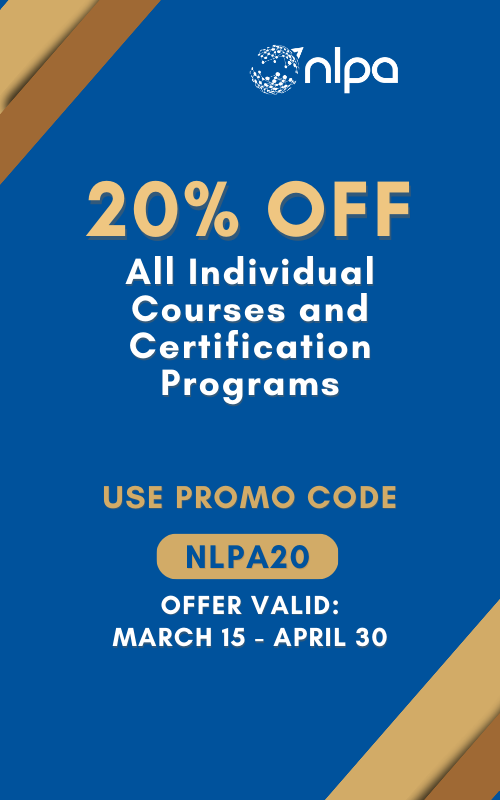A successful procurement transformation involves a strategic overhaul of processes, technologies, and approaches to achieve greater efficiency, cost savings, risk management, and value creation. Here are some types of initiatives that can bring about positive transformation for a procurement team, along with justifications for each:
Digital Procurement Solutions Adoption:
Justification: Implementing digital procurement tools such as e-procurement, spend analytics, contract management, and e-sourcing platforms streamlines processes, reduces manual tasks, enhances visibility into spending patterns, and enables better decision-making. Automation increases efficiency and reduces errors, leading to faster and more accurate procurement cycles.
Consider these courses and resources from NLPA:
14 Procurement Best Practices
Intelligent Procurement: How Can AI Expand Value?
The Drive to an Automated World: Is it the End of the Road for Procurement?
The Future of Procurement Technology
Supplier Relationship Management (SRM) Enhancement:
Justification: Strengthening supplier relationships through SRM initiatives fosters collaboration, innovation, and mutual growth. Improved communication, regular performance assessments, and joint value creation efforts lead to better supplier performance, reduced risks, and potential cost savings through optimized partnerships.
Consider these courses and resources from NLPA:
15 Rules for Ethical Supplier Interaction
Advanced Supply Management Tactics Applied: Customer Driven Design, Master Data & Category Planning
Assess Supplier Financial Risk
Basics of Smart International Procurement
Eliminating the Pain Out of Contract Management
Data-Driven Insights and Analytics:
Justification: Leveraging data analytics provides actionable insights into spending trends, supplier performance, market dynamics, and potential areas for cost reduction. These insights enable data-driven decision-making, negotiation strategies, and risk mitigation, leading to more informed procurement choices.
Consider these courses and resources from NLPA:
Data Analytics for Procurement Professionals
Microsoft Excel for Purchasing Professionals
Excel Basics for Buyers
Strategic Sourcing Optimization:
Justification: Applying strategic sourcing principles, including category management, supplier segmentation, and Total Cost of Ownership (TCO) analysis, optimizes sourcing strategies. This results in better negotiation outcomes, improved quality, reduced costs, and enhanced overall value delivery.
Consider these courses and resources from NLPA:
The 4 Missing Strategic Sourcing Goals
Sourcing and Supply Management in the “New Normal”
Executing a Global Sourcing Strategy
Managing Supplier Performance
Sourcing Problems in a Slow Economy
Make Sourcing Your Competitive Advantage
The 4 Missing Strategic Sourcing Goals
Risk Management and Resilience Planning:
Justification: Implementing risk assessment and mitigation strategies safeguards the supply chain against disruptions, geopolitical shifts, regulatory changes, and other unforeseen events. Procurement teams equipped with risk management tools can ensure business continuity and minimize potential negative impacts.
Consider these courses and resources from NLPA:
Assess Supplier Financial Risk
Basics of Smart International Procurement
Designing Yourself to Fail in Supply Chain Execution
Expert Procurement Operations Management
Improving Quality in the Supply Chain
Sustainable and Responsible Sourcing:
Justification: Incorporating sustainability and ethical considerations into procurement decisions aligns with broader corporate social responsibility goals. Initiatives that prioritize environmentally friendly practices, fair labor, and responsible sourcing improve brand reputation and mitigate potential legal and reputational risks.
Consider these courses and resources from NLPA:
Developing a Sustainable Supply Chain Strategy
Leading the Modern Procurement Function
Make Sourcing Your Competitive Advantage
Procurement in 2025: Five Megatrends and Their Implications
Sample Balanced Scorecard for Procurement
Social Harmony: An International Procurement Priority
Sourcing and Supply Management in the “New Normal”
Strategic Supplier Diversity Best Practices
Supplier Responsibility Checklist
Supply Management Executive Leadership
Supply Risk and Sustainability Management
The Five Worst Practices in Procurement
The Next Frontier in Procurement Transformation
The Rise of Green Supply Chains in Response to Megatrends
Collaborative Cross-Functional Engagement:
Justification: Procurement transformation should involve collaboration with other departments like finance, operations, and legal. This cross-functional engagement ensures alignment of objectives, reduces silos, enhances communication, and leads to more effective procurement strategies that support the organization’s overall goals.
Consider these courses and resources from NLPA:
How Procurement and Finance Can Collaborate
Internal Customer Service Survey Template
Leveraging Procurement for Fiscal Impact
Leveraging SWOT Analysis for Procurement Strategies
Measuring The Impact of Procurement Training
Millenials in Procurement
Next Generation Procurement Talent Management
Powerful Negotiation for Successful Buying
Priorities in Supply Chain Leadership
Procurement 101: The Procurement Management Process
Procurement Ethics Checklist
Procurement Leader vs. Purchasing Manager
Procurement Policy Template
Procurement Position Performance Domain/Competency Chart
Procurement Priorities Should Mirror Organizational Priorities
Talent Development and Skill Enhancement:
Justification: Investing in procurement professionals’ skill development, training, and career growth enhances the team’s capabilities. Well-trained staff can effectively implement new tools and strategies, making the transformation process smoother and more successful.
Consider these courses and resources from NLPA:
14 Procurement Best Practices
Are You Chief Procurement Officer Material?
Expert Procurement Operations Management
Measuring The Impact of Procurement Training
Millenials in Procurement
Next Generation Procurement Talent Management
Procurement 101: The Procurement Management Process
Procurement Leader vs. Purchasing Manager
Procurement Position Performance Domain/Competency Chart
Procurement Team Certification: 5 Benefits You Can Not Afford to Ignore
Sample Balanced Scorecard for Procurement
Separating a Procurement Department Into Tactical and Strategic Teams
Strategic Cost Reduction for Supply Chain Success
Tactical vs. Strategic Procurement Splits
The Evolution and Future of Procurement
The Pain Points of a Procurement Manager
The Procurement Leader’s Guide to a More Successful Team
True Procurement Transformations
Continuous Process Improvement:
Justification: Adopting methodologies such as Lean Six Sigma within procurement processes drives continuous improvement. This leads to streamlined processes, reduced waste, increased efficiency, and consistent value delivery over time.
Consider these courses and resources from NLPA:
Improve Procurement Department Results through Process-Oriented Design
Measuring The Impact of Procurement Training
The Procurement Leader’s Guide to a More Successful Team
Expert Procurement Operations Management
Performance Metrics and KPIs Implementation:
Justification: Establishing clear performance metrics and Key Performance Indicators (KPIs) helps measure the success of transformation efforts. These metrics enable ongoing monitoring of progress, identification of areas needing improvement, and alignment with organizational goals.
A successful procurement transformation requires a holistic approach that combines these initiatives to create a cohesive strategy aimed at driving efficiency, innovation, and value across the procurement function. The specific mix of initiatives will depend on the organization’s goals, industry, and current state of procurement practices.
Consider these courses and resources from NLPA:
Managing Supplier Performance
Tips for Regret-Free Supplier Communication
Supplier Development Program Basics
14 Procurement Best Practices
Procurement KPIs and Business Acumen
Procurement Position Performance Domain/Competency Chart
Measuring The Impact of Procurement Training
Are Your Purchasing Job Descriptions Outdated?
In conclusion, embarking on a procurement transformation journey is not just a strategic choice; it’s a necessity in today’s dynamic business landscape. By implementing the right initiatives and embracing change, organizations can unlock substantial benefits, from cost reductions and risk mitigation to enhanced supplier relationships and increased value delivery. Remember that procurement transformation is an ongoing process, and staying adaptable and innovative is key to sustained success. So, take the first step and let your procurement team pave the way for a more efficient, resilient, and value-driven future.
Visit NLPA Learning, the new home to all of our certifications and online courses. NLPA Learning also includes learning resources, including live and on-demand webinars, publications and reports, articles, templates, white papers, and more!




